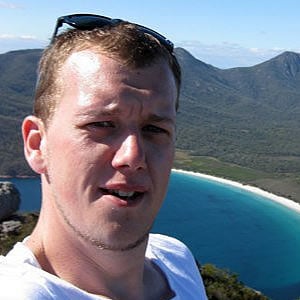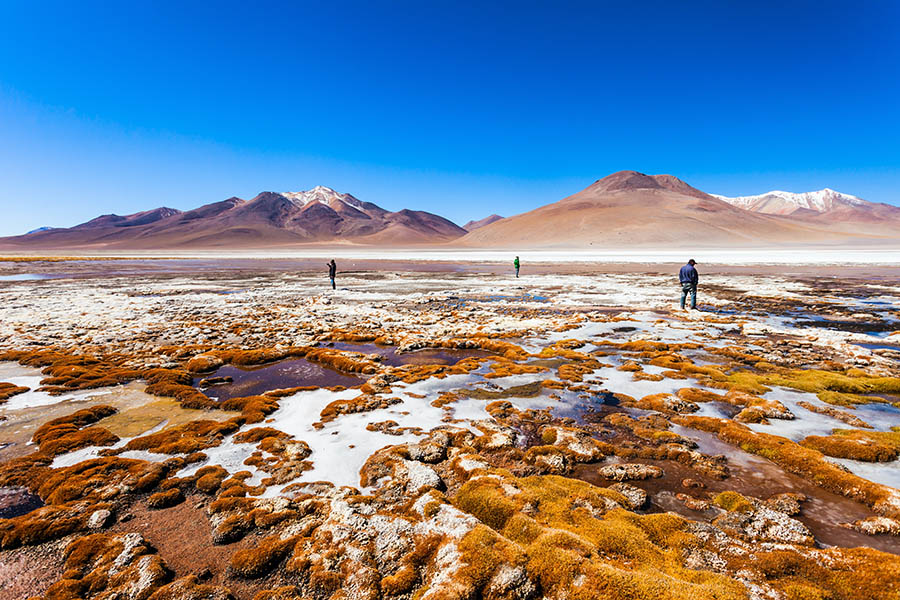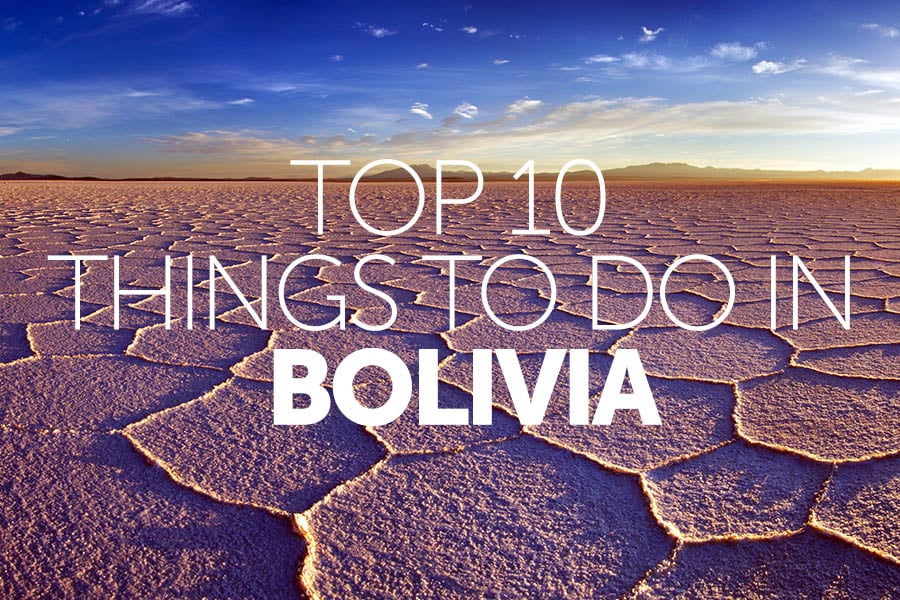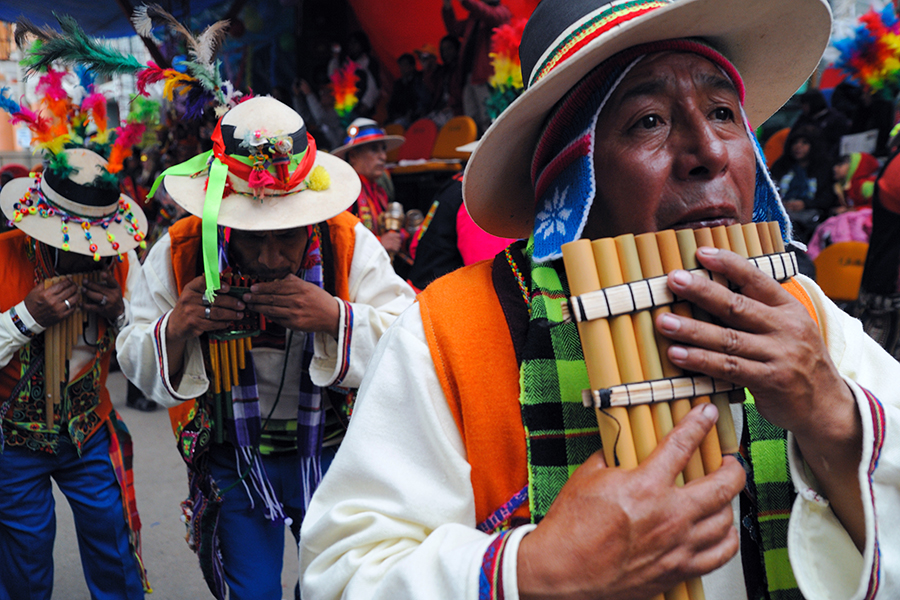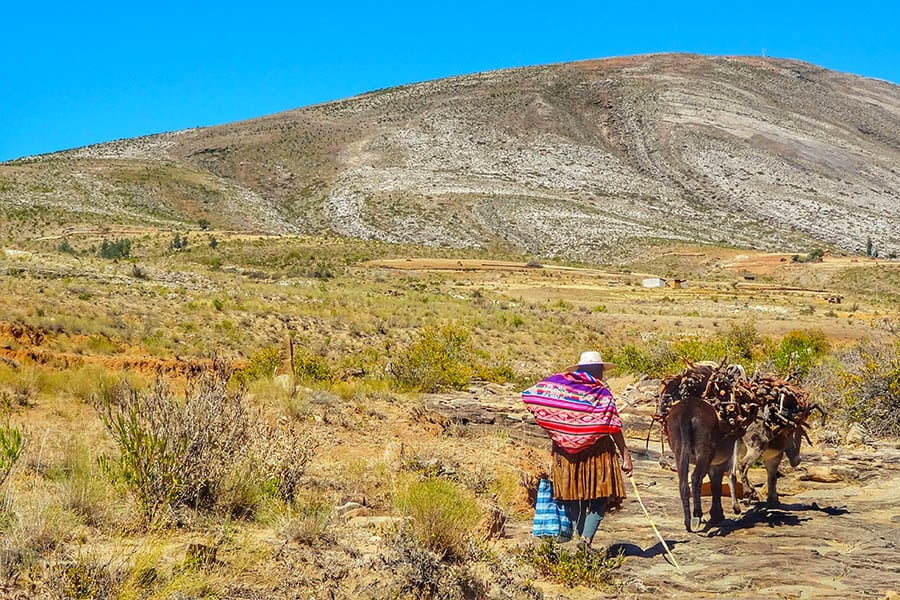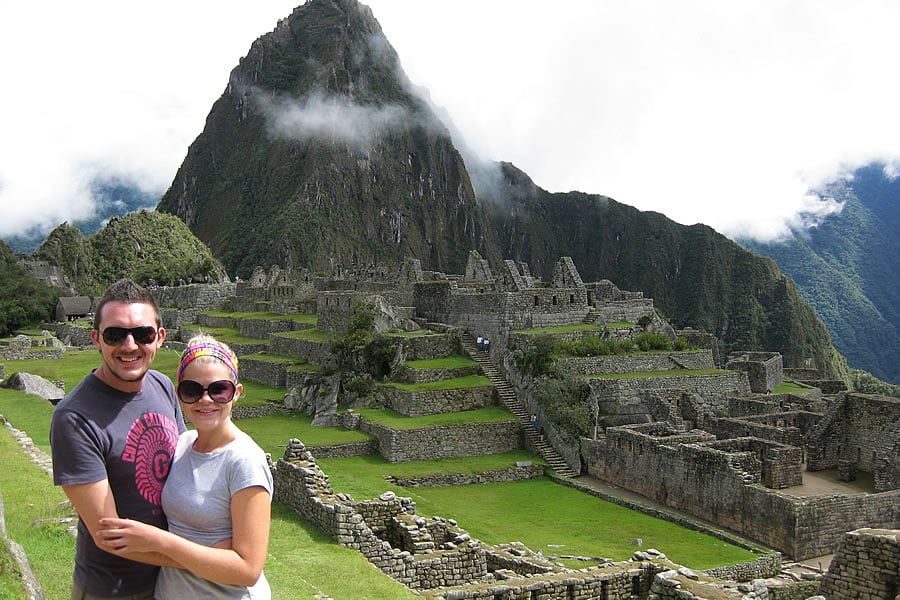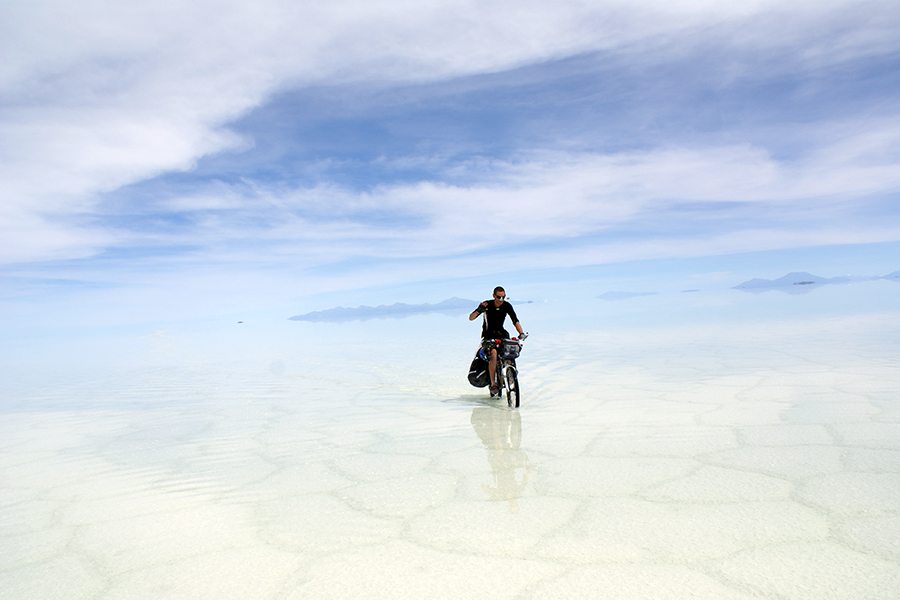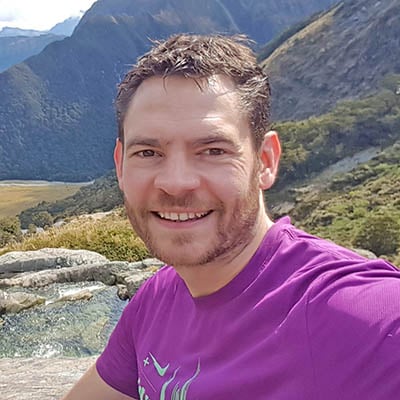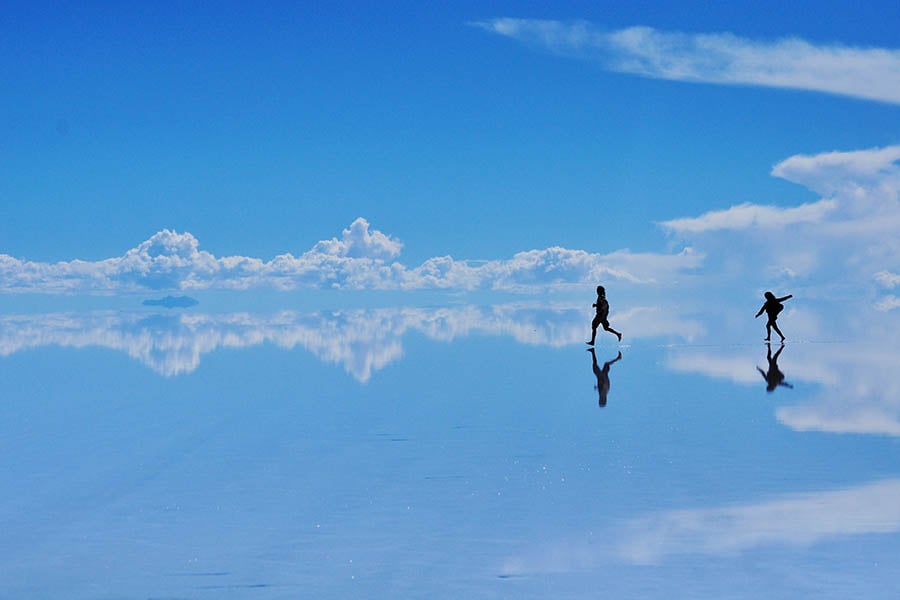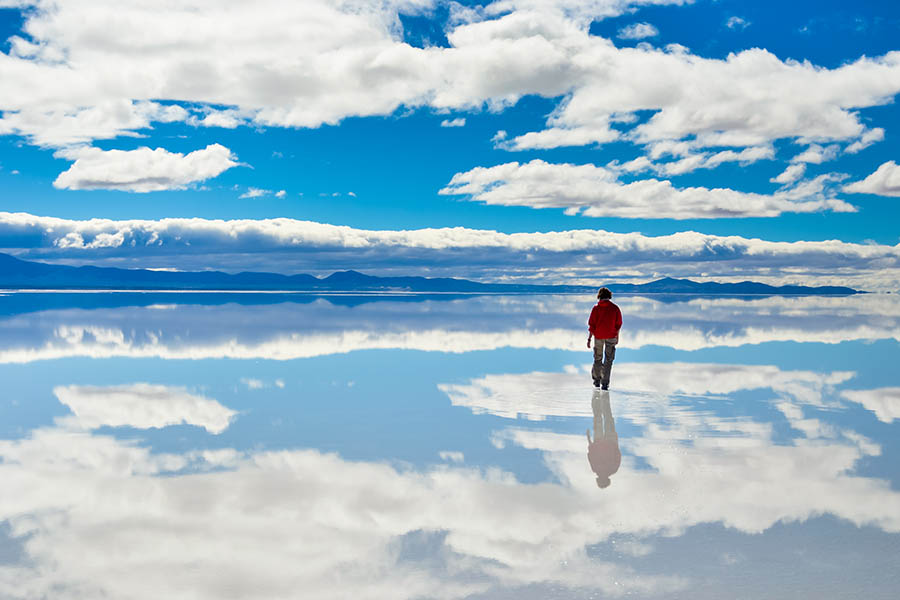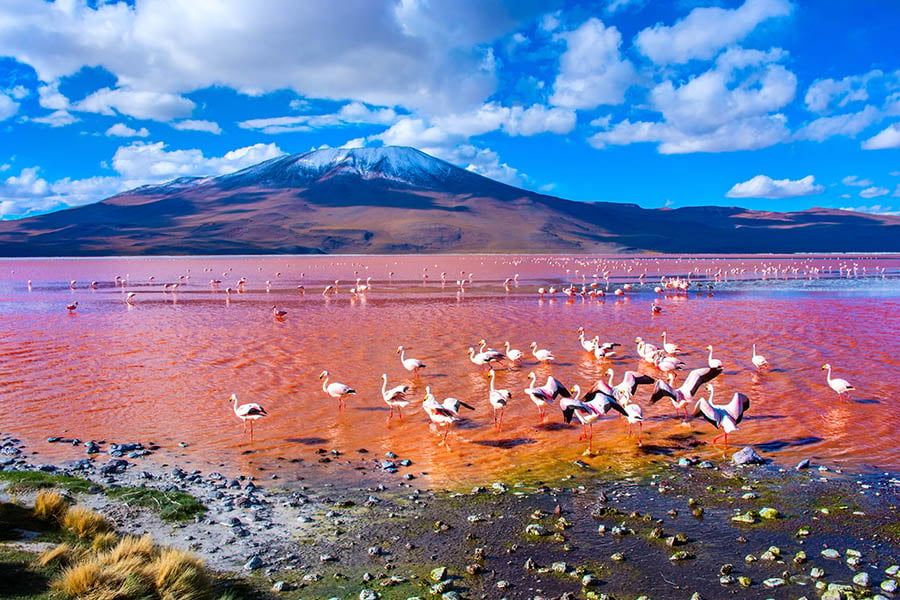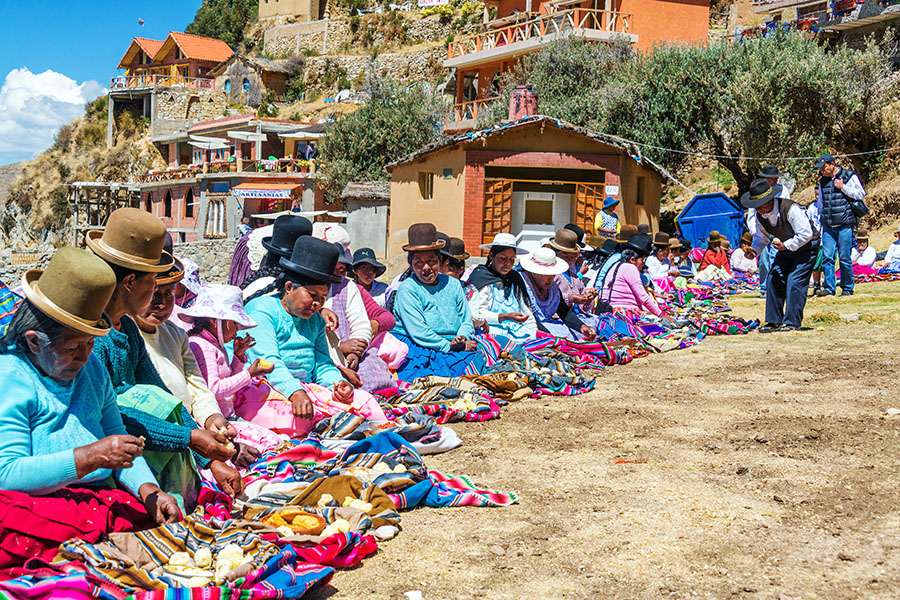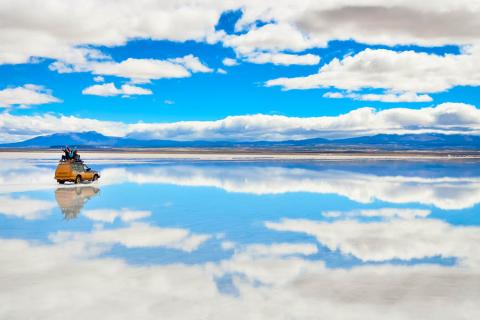
A Bolivian salt flats tour with Santa Cruz, Sucre & La Paz
I'd heard great things about Bolivia from customers I’d booked trips for; from the vibrant streets of La Paz to the stunning skyline on the pristine waters of Lake Titicaca and the almost alien beauty in Uyuni on a Bolivian salt flats tour. I couldn’t wait to experience all this for myself.
My itinerary took place over ten days, but I recommend you allow more time than I did. We started in Santa Cruz, took a domestic flight to Sucre and then drove to the Potosi silver mines. From there, we took a 4WD jeep tour to Uyuni for the salt flats, finishing with a couple of nights on Lake Titicaca and La Paz.

Santa Cruz
Santa Cruz is a city that is expanding very quickly, and contemporary buildings are popping up in between the traditional structures all the time. We stayed in the fantastic Camino Real Hotel before heading to the Guembe Biocentre - a wildlife sanctuary which houses the world's largest butterfly sanctuary and a large bird collection as well as sheltering monkeys and turtles. I saw my first real-life sloth here!
Santa Cruz is in the lower-lying, sub-tropical region of Bolivia, so it enjoys a warm temperature for most of the year.
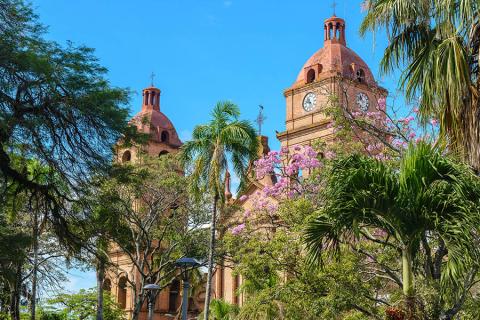
Sucre
Next, we took a 50-minute flight from Santa Cruz to Sucre and got stuck in right away with a city tour, which is a good way to get your bearings.
Our first stop was Sucre’s main square with views overlooking this fantastic city. The view here may be the image you have of Bolivia in your head - a stunning, white-washed and almost untouched Spanish colonial town with ornate architecture and narrow, cobbled streets.
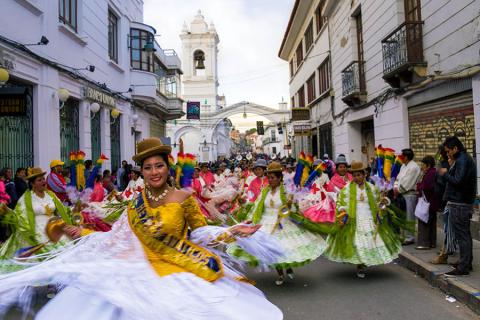
It’s not a super touristy place, but during the colonial era, the Spaniards involved in the nearby silver mines at Potosi used to stay here in the more temperate climates. One evening we went to a fantastic dinner show with traditional Bolivian dance and music, and as it’s a university town, so there is some fun nightlife too.
Sucre is reputedly one of the cheapest places to live and stay and also one of the safest cities in South America. It’s also one of the top destinations in South America to learn Spanish as Bolivians don’t speak too fast and the use quite a pure form of Spanish, which makes it easier for foreigners to understand and to learn. I certainly found the local people to be really friendly and never felt unsafe.
Bolivian salt flats tour in Uyuni
Our next journey took us up high into the Andes – to the Bolivian Altiplano for the next stage of our adventure.
I was quite unprepared for the salt flats at Uyuni – they are unbelievable! Imagine standing on moon terrain, with endless blue skies above and small islands of enormous green cacti beneath – that would come close!
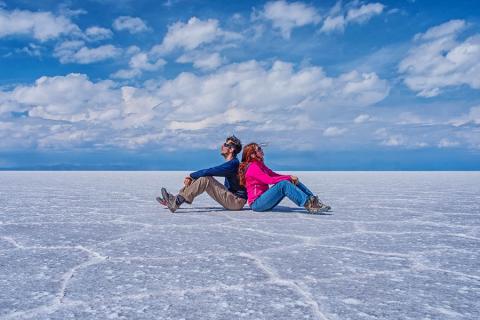
I visited as part of a small group tour, and we had five 4WD vehicles with local drivers between us. We spent the whole day out exploring the salt lake, including having lunch in the middle of the flats at Incahuasi island. This little oasis in the lake gives you the most surreal view – you’ll be looking over a forest of cacti towards what should be a lake, but in reality is a brilliant white salt lake shimmering in the sun – it’s unforgettable!
These are the largest salt flats in the world and sitting at an altitude of over 3,500m above sea level; they’re visible from space. Salt flats form in arid deserts with low humidity where lake water cannot drain anywhere, and the sun causes evaporation faster than the rains can fill the lake.
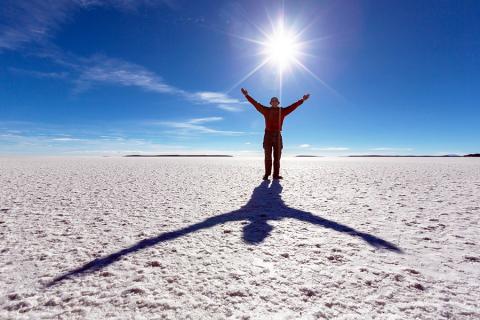
The sun is powerful as you're at such a high altitude so remember to take some factor 50 sun cream. We stayed here for sunset too which is another incredible experience. Again, bring warm clothes as the temperature drops by 20 degrees within two hours of sunset. We stayed in one of the many salt hotels which are worth the extra expense – they are constructed totally from salt! The hotels are based right on the edge of the flats for easy access and are of a very high standard - I would love to go back for another stay.
Lake Titicaca
Lake Titicaca is an ancient lake, and it sits on the border between Bolivia and Peru, so it features in most South America itineraries where people plan to cross from one country into another without flying. Our visit to the lake included hydrofoil cruises over to two separate islands – Sun Island and Moon Island.
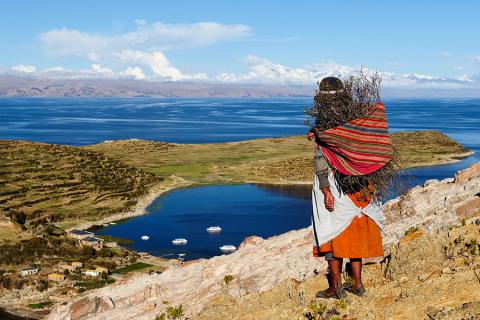
Sun Island and the llama trek
Sun Island is the largest island on Lake Titicaca and is significant because it’s thought to be the birthplace of the Inca Empire, and it has evidence of the Tiwanaku Empire from around 1,500BC. It has three significant communities and about 800 families living here, with no cars or paved road, so it feels quite authentic and untouched.
When we arrived on Sun Island, it was about a 45-minute walk up to our accommodation for the evening. Accompanied by Gerald and his mother (both llamas!) we were led up to our accommodation, while they helped carry our bags! We trekked along the hillside to get to the town and stayed overnight in a little Spanish hacienda overlooking the Alps, which was a very relaxing experience.
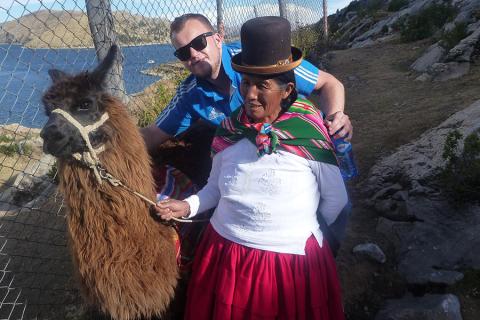
Moon Island
Moon Island is a much smaller island to the east of Isla de Sol where, according to legend, the moon was released into the sky. There is only one small community here, beside some Incan ruins which have recently been restored after they were destroyed to build a political prison on the opposite side of the island.

La Paz
The capital, La Paz is unlike any other city I've seen. From above when we flew in, it looked like a vast crater hidden beneath a layer of cloud. On arrival, you begin to realise there is a sprawling city hidden in this valley and it’s quite a sight!
On the edge of La Paz, you'll be at the height of nearly 4000m, and eventually, you descend to almost 3000m at the city's lowest point. Locals joke that the more money you have, the lower down you live. The city is worth a few days' visit, and I'd also recommend a visit to Moon Valley if you have a few hours. It's a strange landscape of eroded rock which has formed a hillside maze.
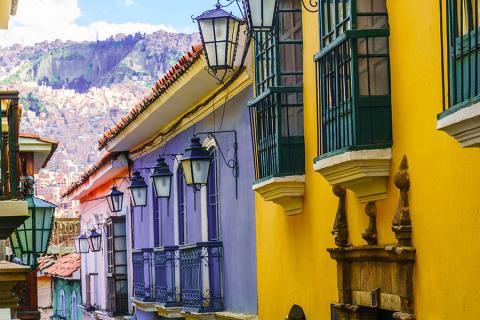
My thoughts on Bolivia
I don’t think I've ever visited a country with such diverse, stunning landscapes and such welcoming, respectful people. I would go as far to say that Bolivia shouldn’t just be a stop on your round the world journey; it deserves an extended trip on its own.
We spent some time with a witch doctor who explained some traditions and answered our questions by looking to the spirits for guidance, and he used cocoa leaves to read our futures, which was very enlightening! Tradition is significant in Bolivia, and they observe many different customs. It's very much a blend of Inca spirituality and appeasing Pachamama ('Mother Earth'), with the Christian faith which was introduced by the Spanish.
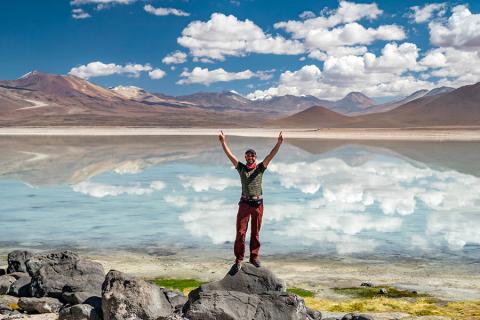
Interested in a Bolivian salt flat tour?
If you'd like to visit, we can show you how to include Bolivia in your round the world ticket. We can also tailor-make your entire Bolivia holiday to include flights, tours and accommodation and any experiences you choose. If you’d like to twin Bolivia with Chile or Peru or anywhere else, we’ll help you plan juts the trip you want – see your flight-exclusive trip Bolivia trip ideas for more ideas.
To start planning your South America trip – call us on 1273 320 580 or request a quote by email.

